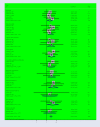Post-traumatic stress disorder in the Ethiopian population dwelling in war-affected communities: a systematic review and meta-analysis
- PMID: 38784164
- PMCID: PMC11112411
- DOI: 10.3389/fpsyt.2024.1399013
Post-traumatic stress disorder in the Ethiopian population dwelling in war-affected communities: a systematic review and meta-analysis
Abstract
Background: Post-traumatic stress disorder (PTSD) is a significant mental health concern globally, particularly prevalent in populations exposed to war and conflict. This systematic review and meta-analysis aim to examine the prevalence and factors associated with PTSD among the Ethiopian population residing in war-affected communities.
Methods: The review was reported according to the PRISMA guidelines. Related eligible published articles were searched in electronic online databases such as PubMed, Scopus, Web of Science, MEDLINE/PubMed, Scopus, Embase, Science Direct, Web of Science, Google Scholar, and Google, which reported the prevalence and risk factors of PTSD among people dwelling in the war-affected area until January 2024. The relevant data was extracted using a Microsoft Excel spreadsheet. The meta-analysis was conducted using STATA version 11. The estimated pooled prevalence and risk factors were estimated using a random effect model. The potential risk of publication bias was checked using a funnel plot and Egger's statistical test.
Results: A total of nine published studies with 6107 participants were analyzed in this meta-analysis. The estimated pooled prevalence of PTSD among people living in war-affected areas was 48.4%, with a 95% CI (37.1, 59.8). This study found a higher prevalence of PTSD among women than men. Being female (OR= 2.2, 95% CI: 1.2, 4.3), witnessing a murder of a loved one (OR= 3.0, 95% CI: 1.2, 7.5), depression symptoms (OR= 2.8, 95% CI: 1.4, 5.6), and anxiety symptoms (OR= 3.4, 95% CI: 1.4, 8.0), a close family member killed or seriously injured (OR= 3.1, 95% CI: 1.2, 7.7), a moderate and high perceived threat to life (OR= 3.4, 95% CI: 1.3, 9.1), and poor social support (OR= 4.4, 95% CI: 1.1, 18.7) were associated with post-traumatic stress disorder.
Conclusion: The result of this study shows the high prevalence rate of PTSD in people living in war-affected areas. disparities in PTSD prevalence, with women being at higher risk, and identified risk factors were witnessing the murder of a loved one, experiencing depression and anxiety, and perceived threat to life. Addressing PTSD in war-affected communities requires comprehensive interventions that consider both individual and contextual factors.
Systematic review registration: www.crd.york.ac.uk/PROSPERO/, identifier CRD42024501384.
Keywords: PTSD; conflict; internal conflict; trauma; war.
Copyright © 2024 Tinsae, Shumet, Tadesse, Takelle, Rtbey, Melkam, Andualem, Nakie, Segon, Koye, Fentahun and Alemu.
Conflict of interest statement
The authors declare that the research was conducted in the absence of any commercial or financial relationships that could be construed as a potential conflict of interest.
Figures









Similar articles
-
Deployment of personnel to military operations: impact on mental health and social functioning.Campbell Syst Rev. 2018 Jun 1;14(1):1-127. doi: 10.4073/csr.2018.6. eCollection 2018. Campbell Syst Rev. 2018. PMID: 37131363 Free PMC article.
-
Post-traumatic stress disorder and associated factors among internally displaced persons in Africa: A systematic review and meta-analysis.PLoS One. 2024 Apr 1;19(4):e0300894. doi: 10.1371/journal.pone.0300894. eCollection 2024. PLoS One. 2024. PMID: 38557637 Free PMC article.
-
Prevalence of depression, anxiety and post-traumatic stress in war- and conflict-afflicted areas: A meta-analysis.Front Psychiatry. 2022 Sep 16;13:978703. doi: 10.3389/fpsyt.2022.978703. eCollection 2022. Front Psychiatry. 2022. PMID: 36186881 Free PMC article.
-
Post-traumatic stress disorder and its associated factors among war-affected residents in Woldia town, North East Ethiopia, 2022; community based cross-sectional study.PLoS One. 2023 Dec 21;18(12):e0292848. doi: 10.1371/journal.pone.0292848. eCollection 2023. PLoS One. 2023. PMID: 38127880 Free PMC article.
-
Prevalence of common mental disorders and sleep disorder among adolescents and young adults with HIV: a systematic review and meta-analysis.BMJ Open. 2025 May 15;15(5):e093320. doi: 10.1136/bmjopen-2024-093320. BMJ Open. 2025. PMID: 40379341 Free PMC article.
Cited by
-
Prevalence of suicidal behavior and its associated factors among individuals living in war-affected areas of Dessie Town, northeast Ethiopia, in 2022: a cross-sectional study.Front Psychiatry. 2025 May 29;16:1453526. doi: 10.3389/fpsyt.2025.1453526. eCollection 2025. Front Psychiatry. 2025. PMID: 40511466 Free PMC article.
References
-
- American Psychiatric Association A, Association AP . Diagnostic and statistical manual of mental disorders: DSM-IV. Washington, DC: American Psychiatric Association; (1994).
Publication types
LinkOut - more resources
Full Text Sources

